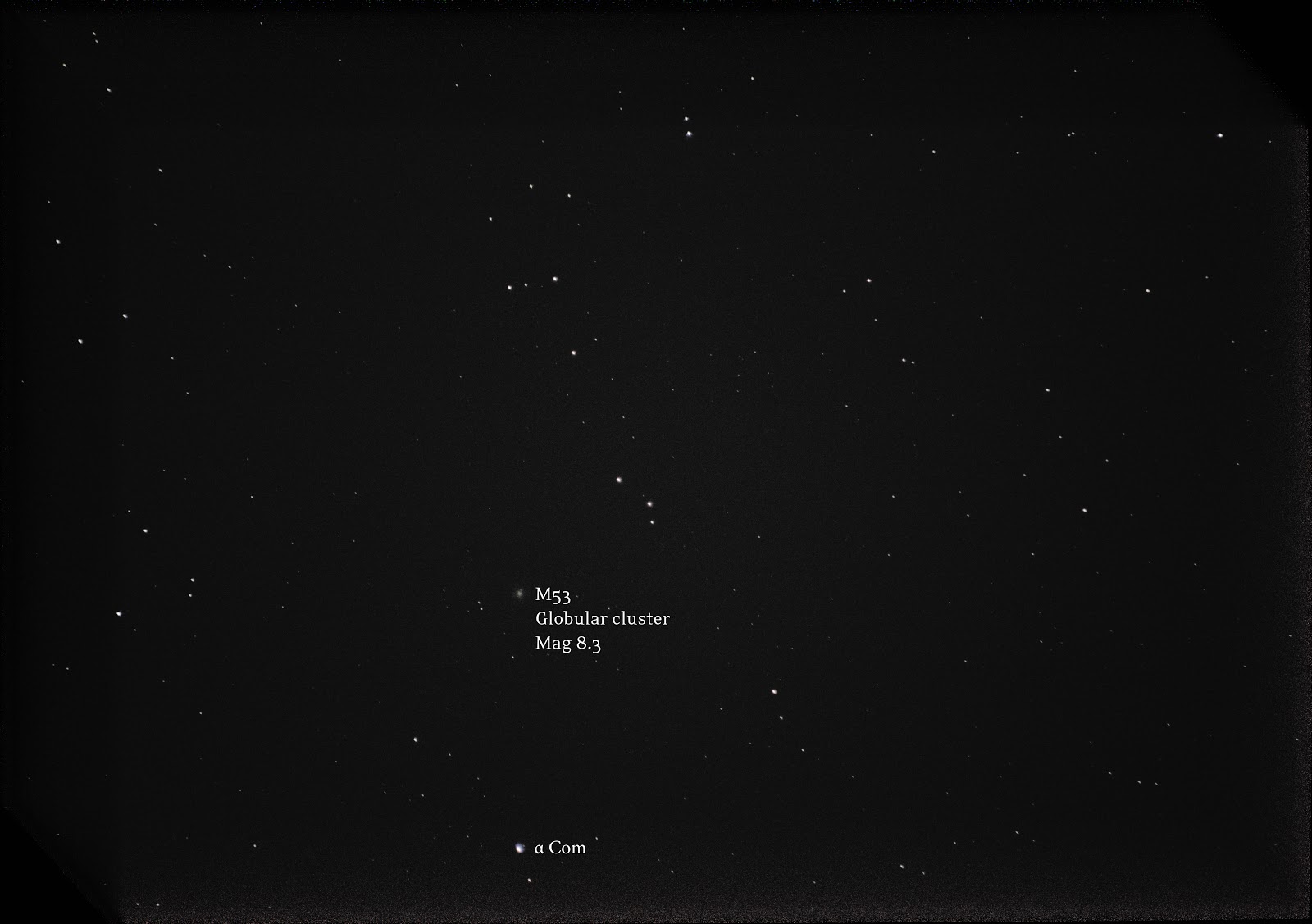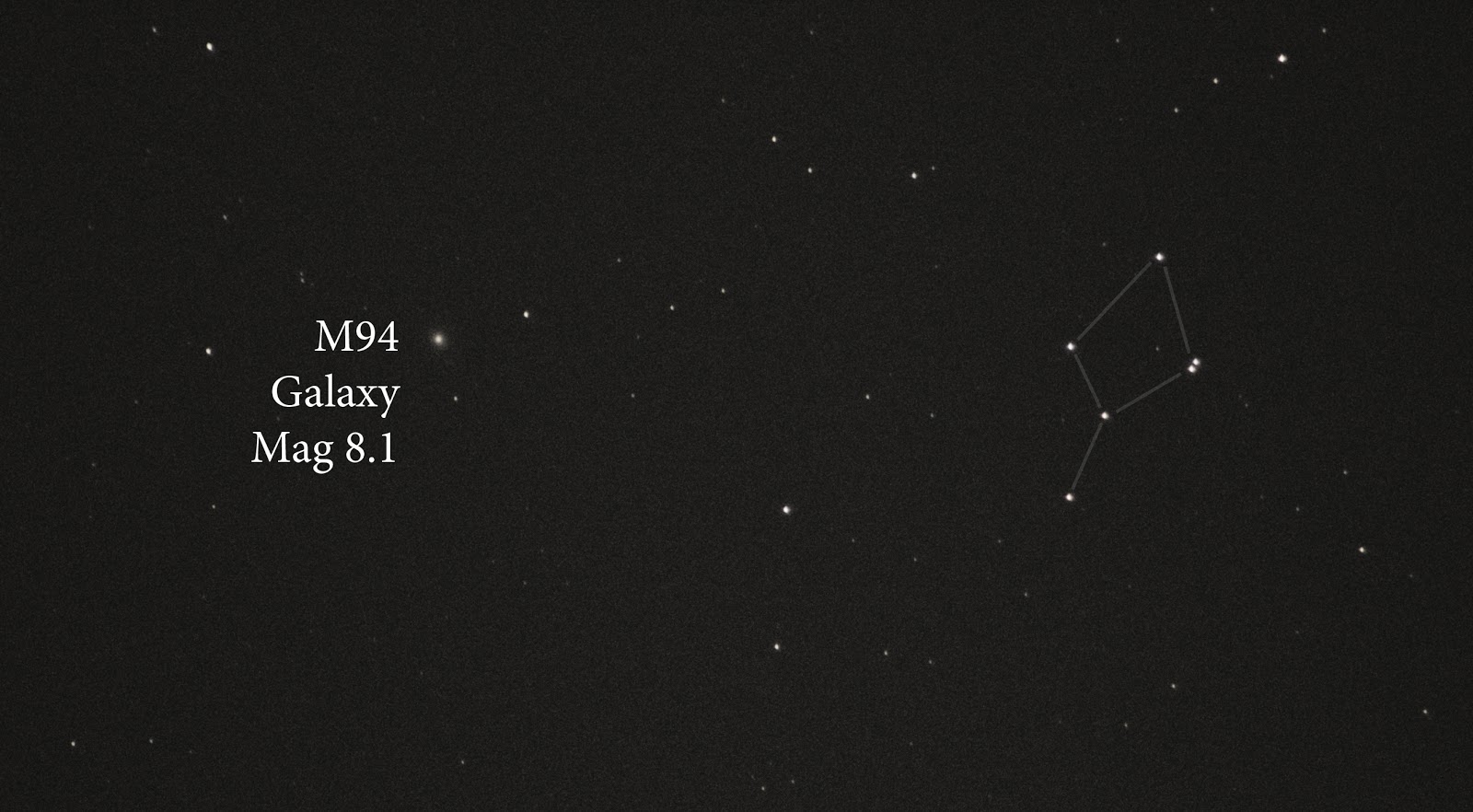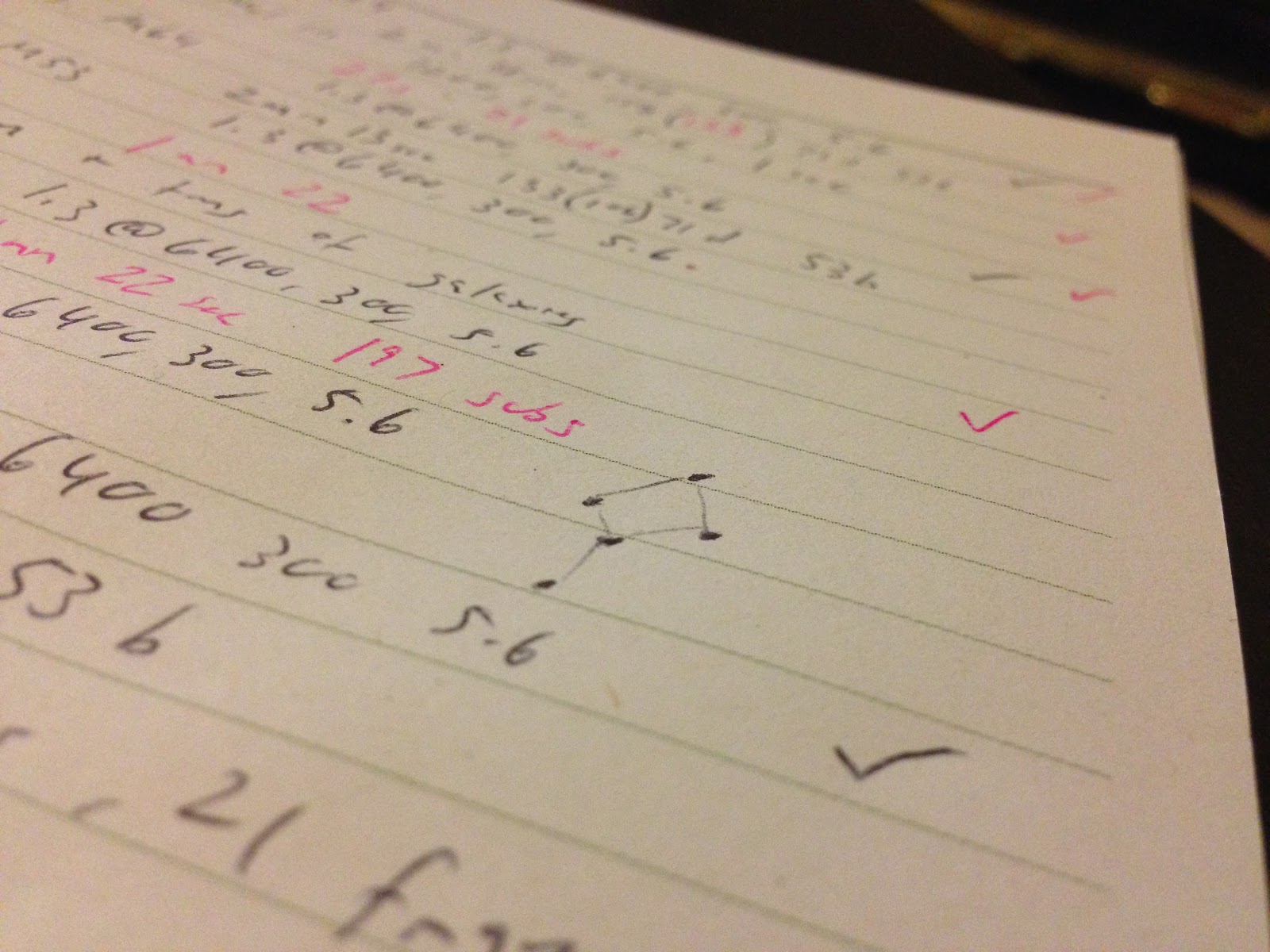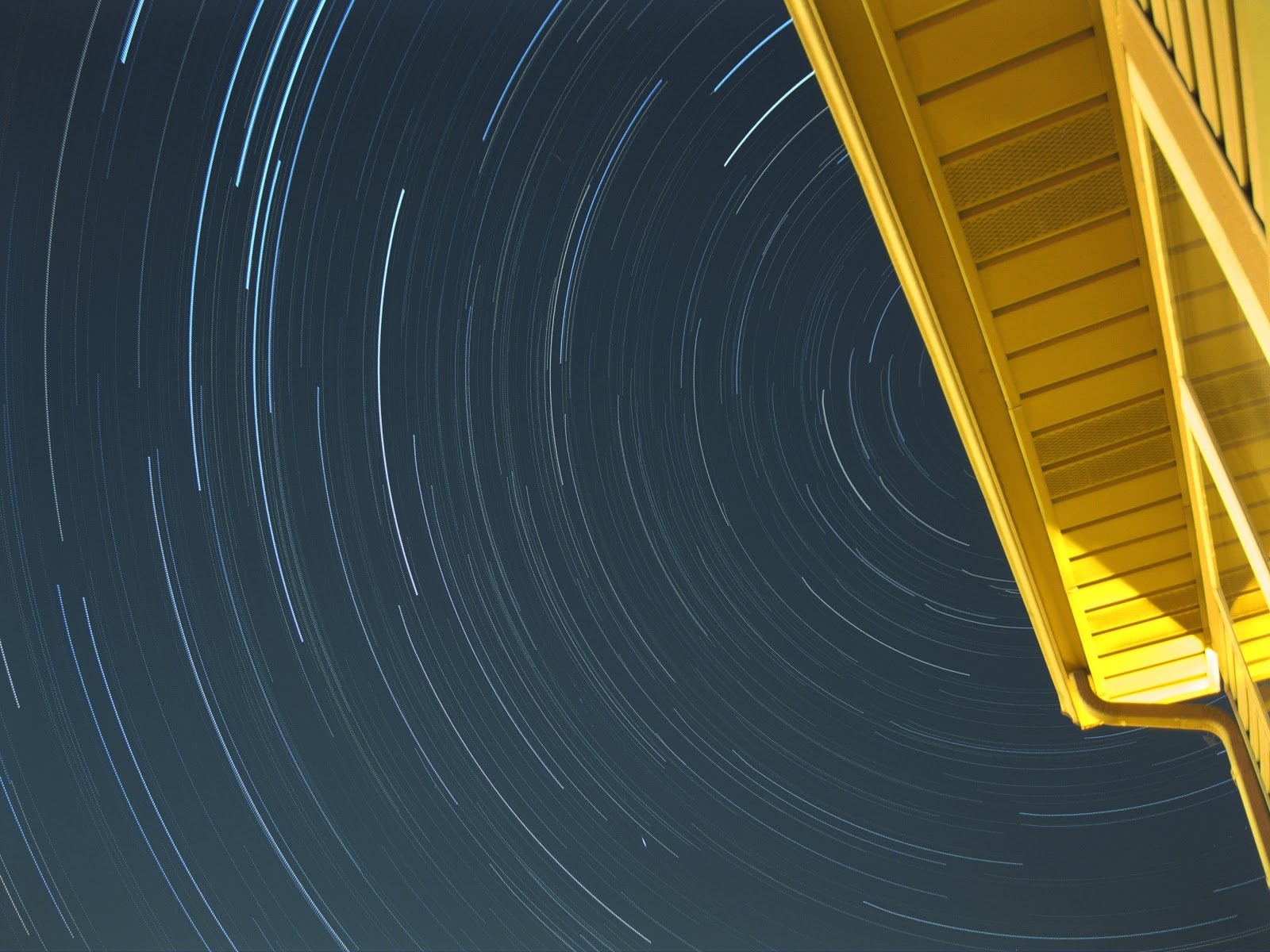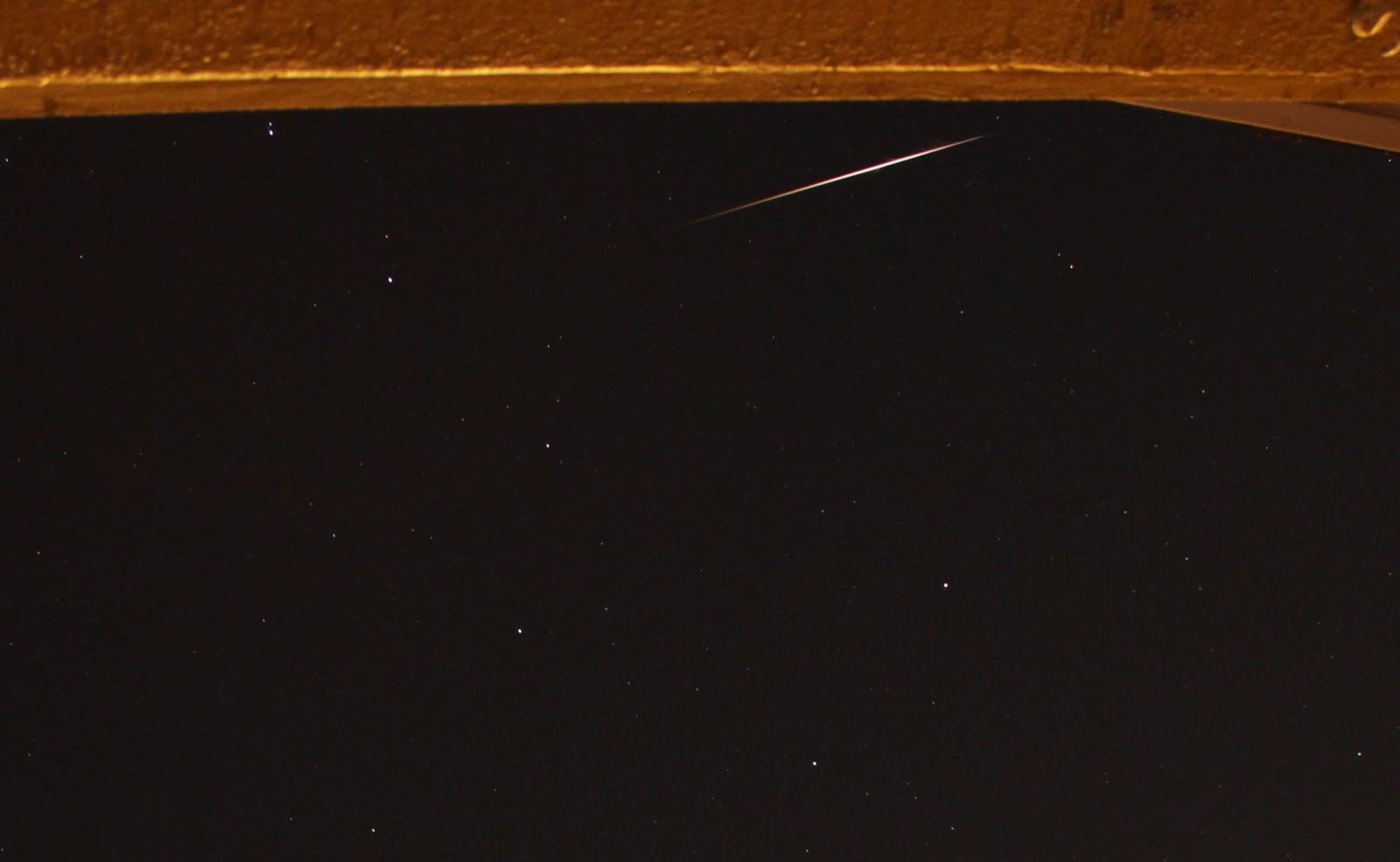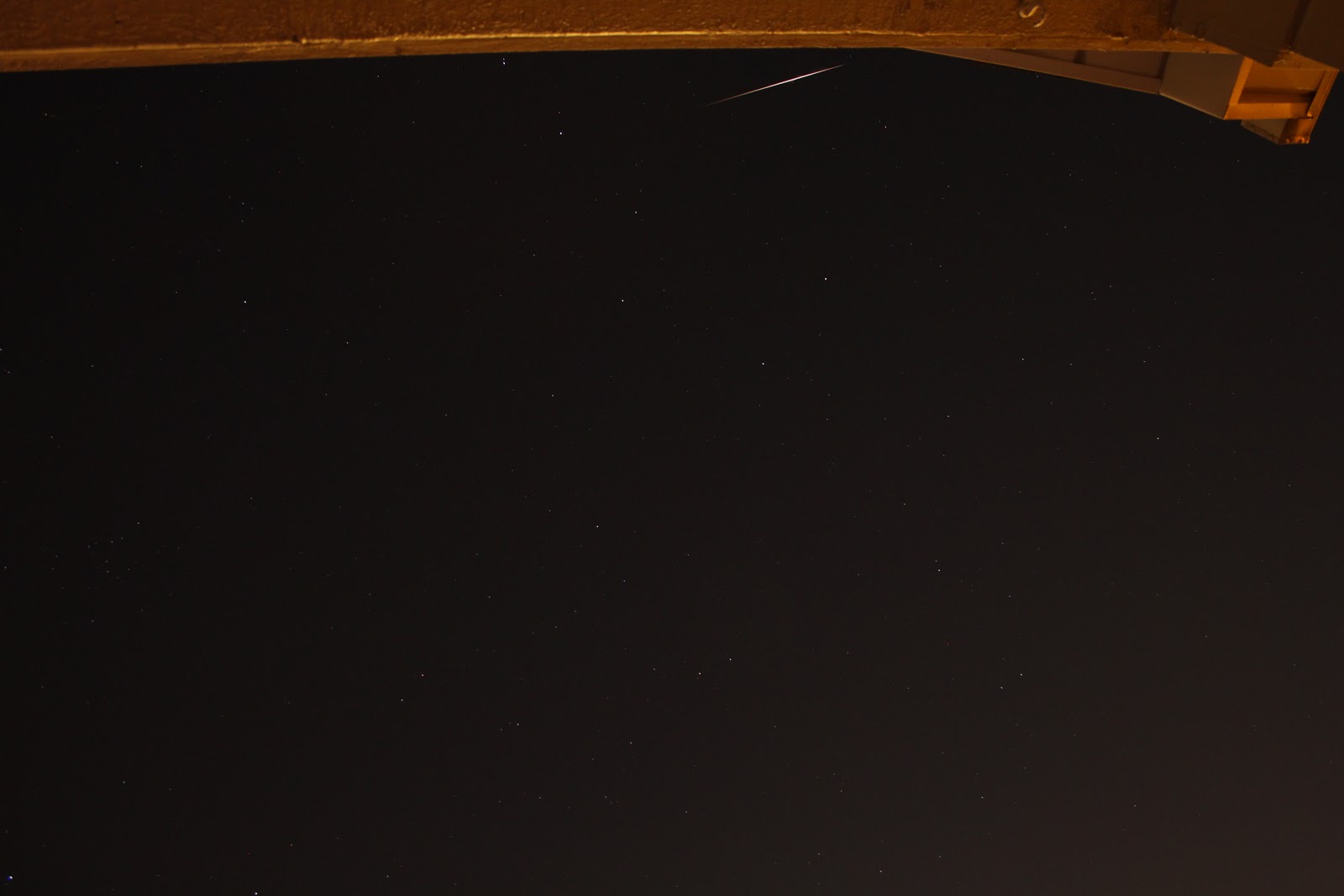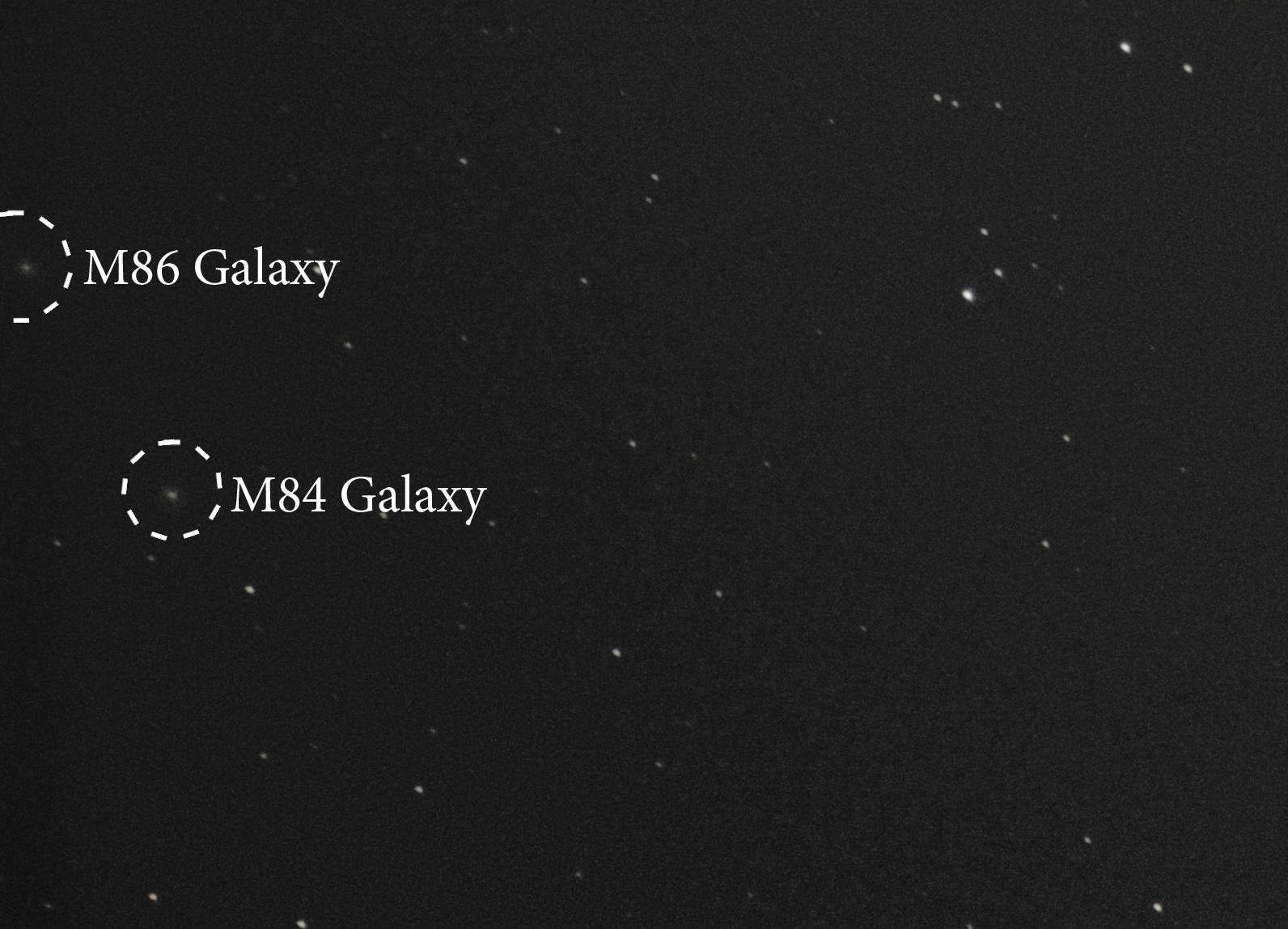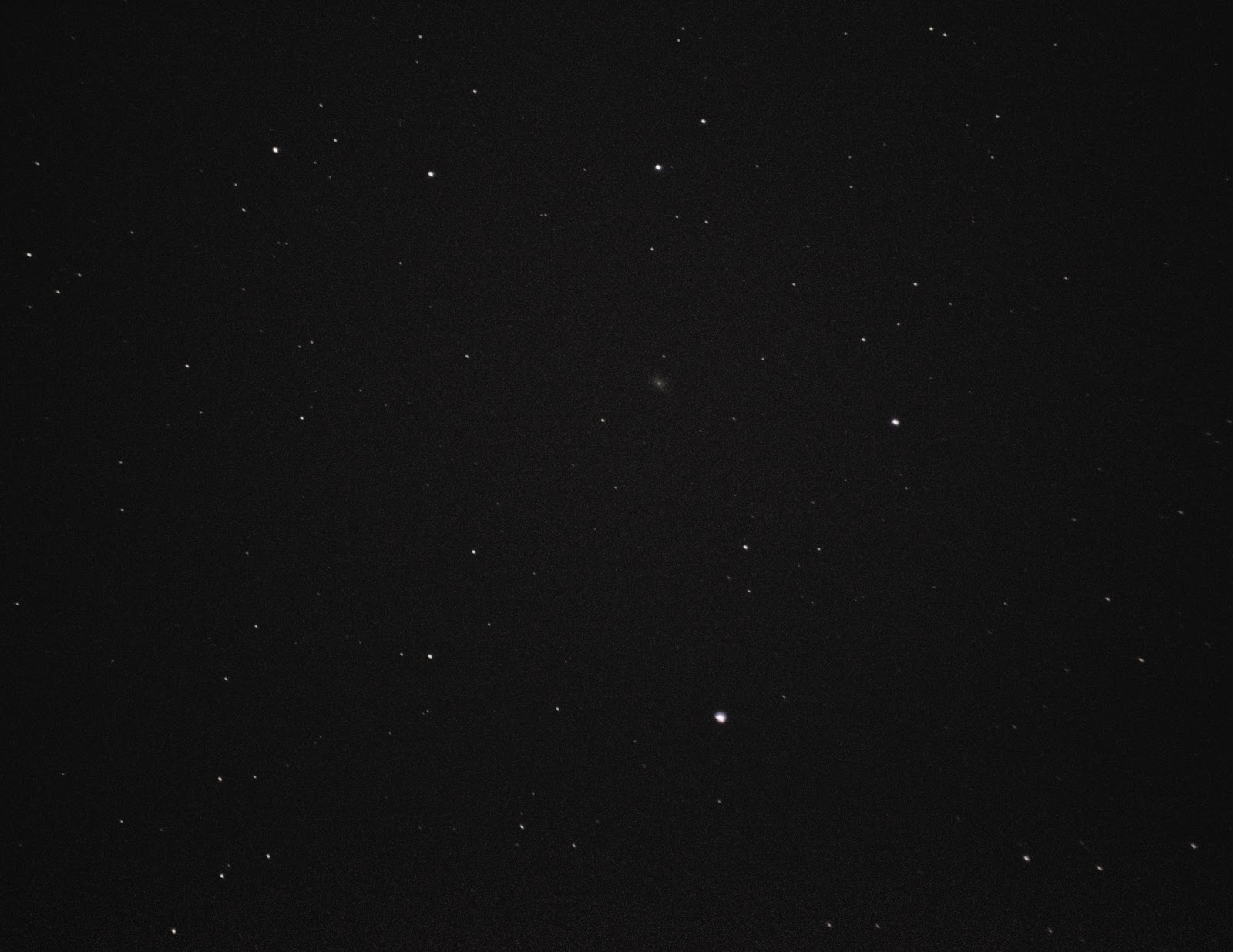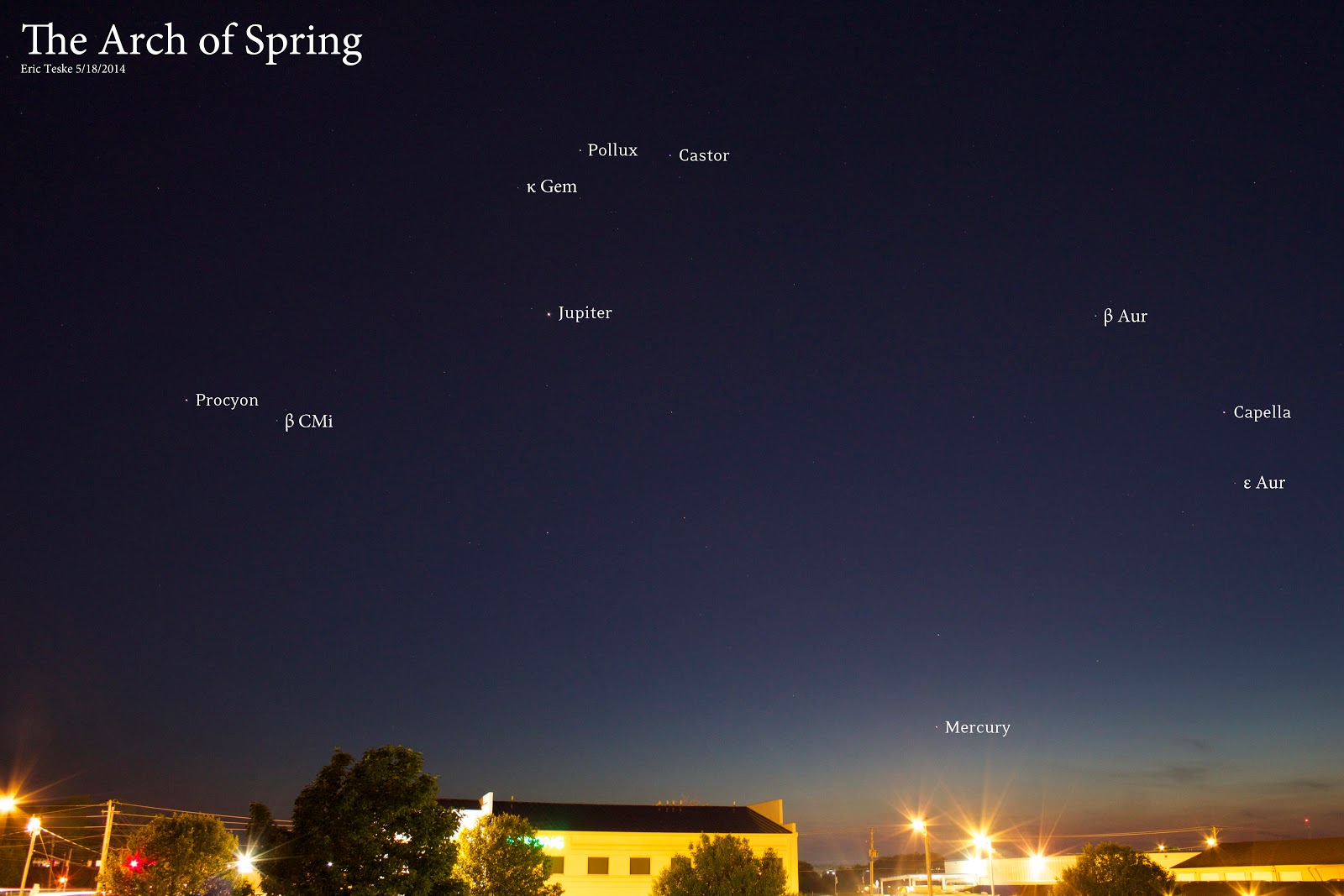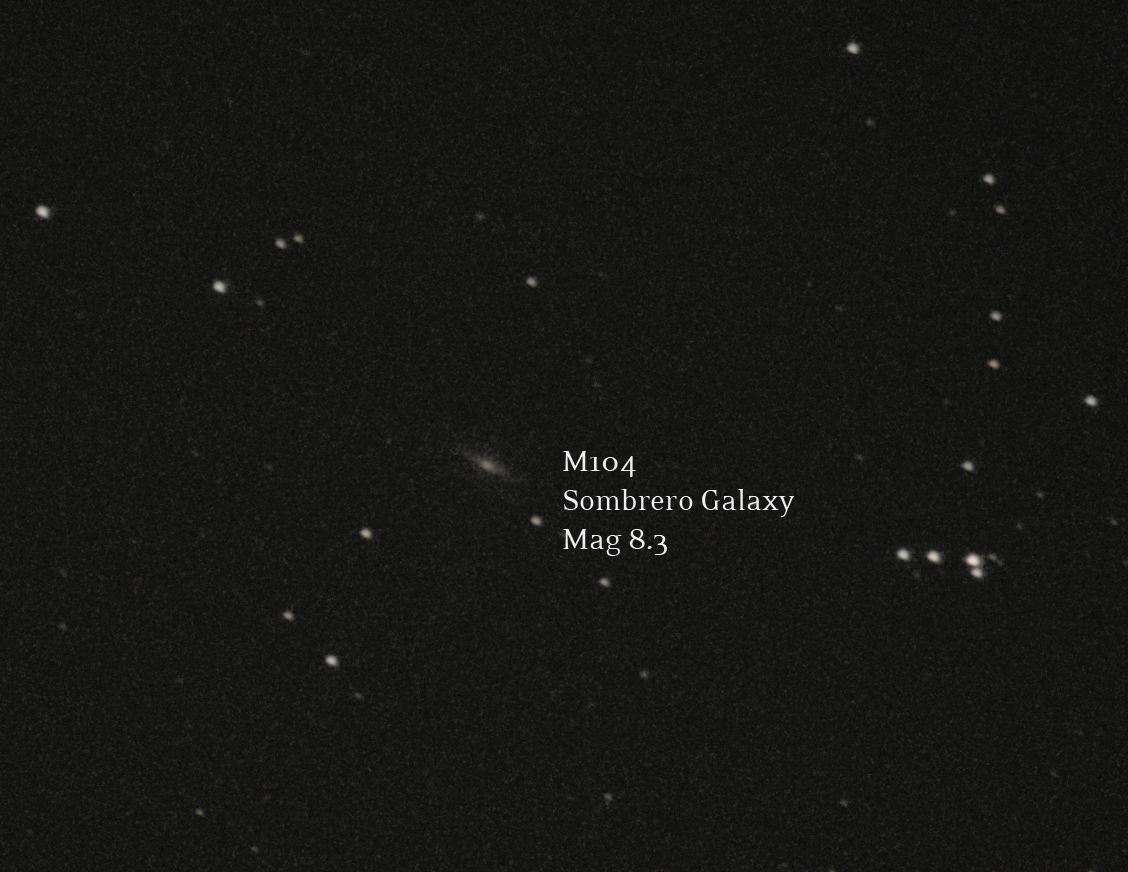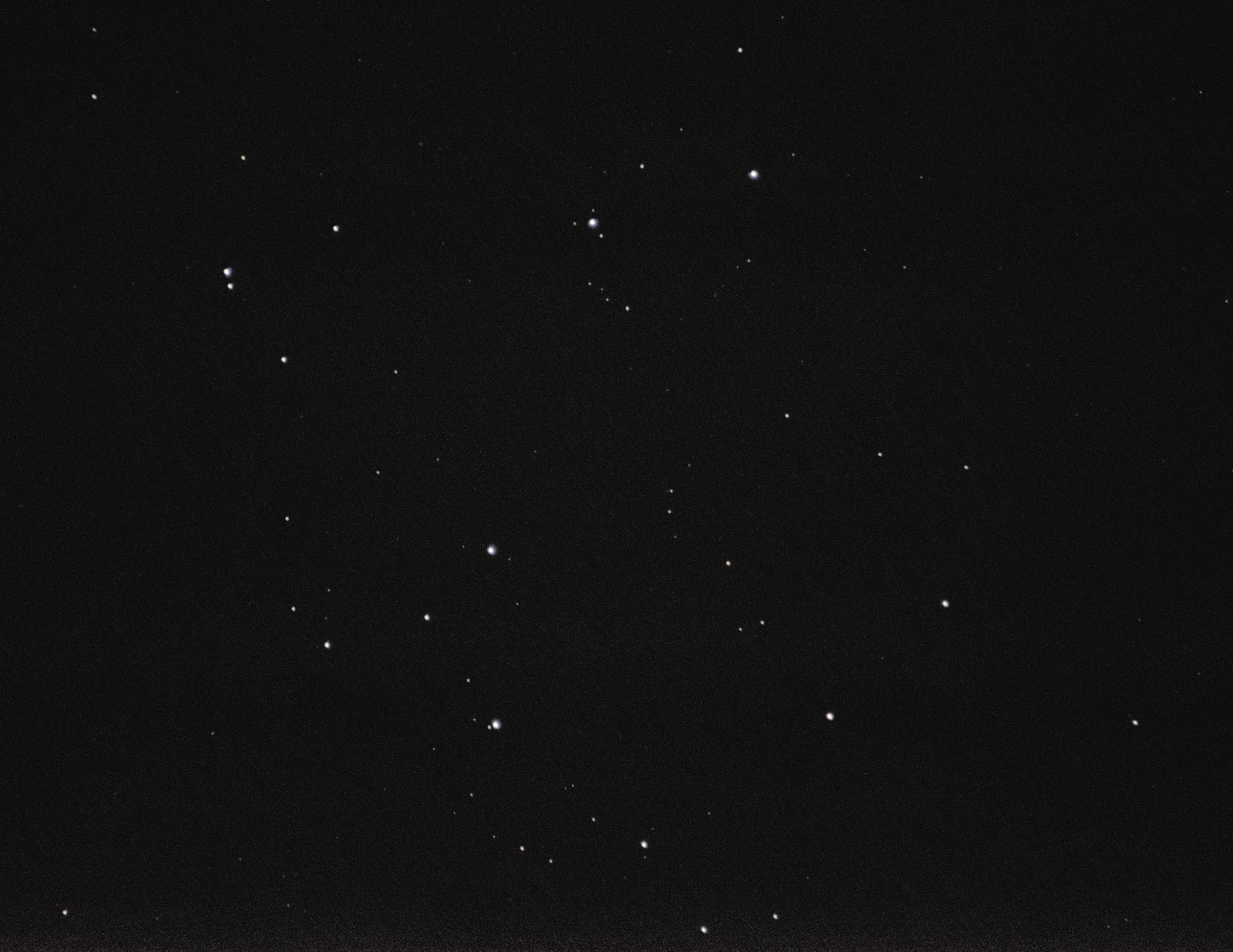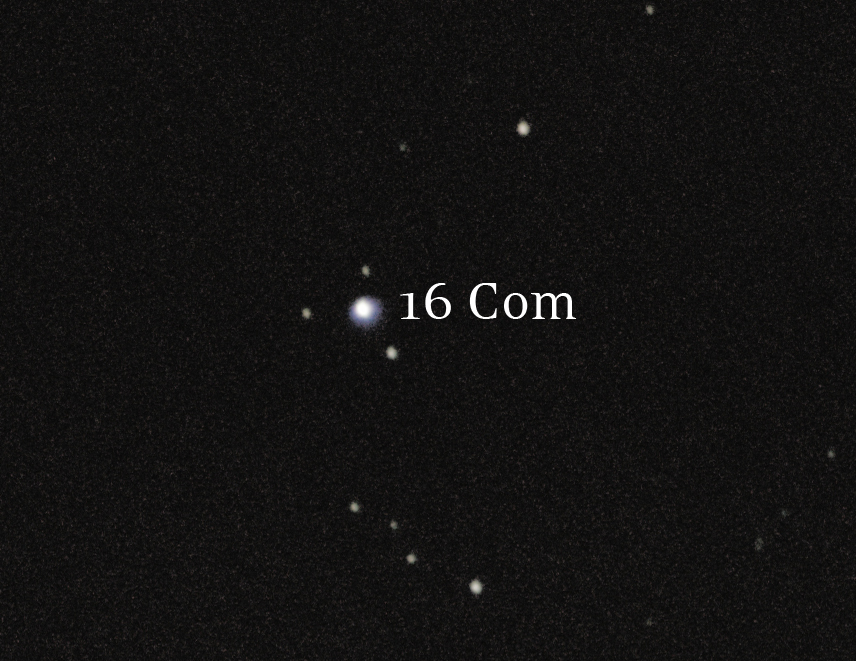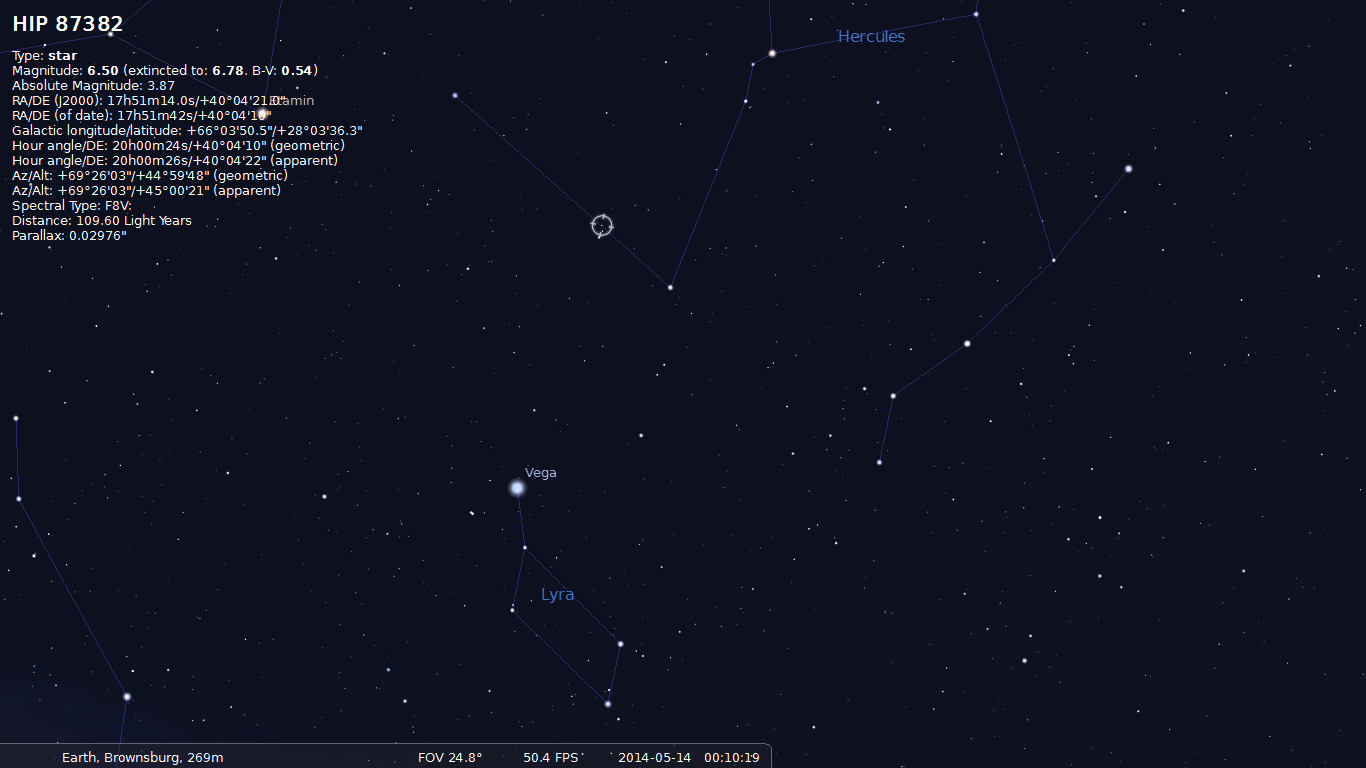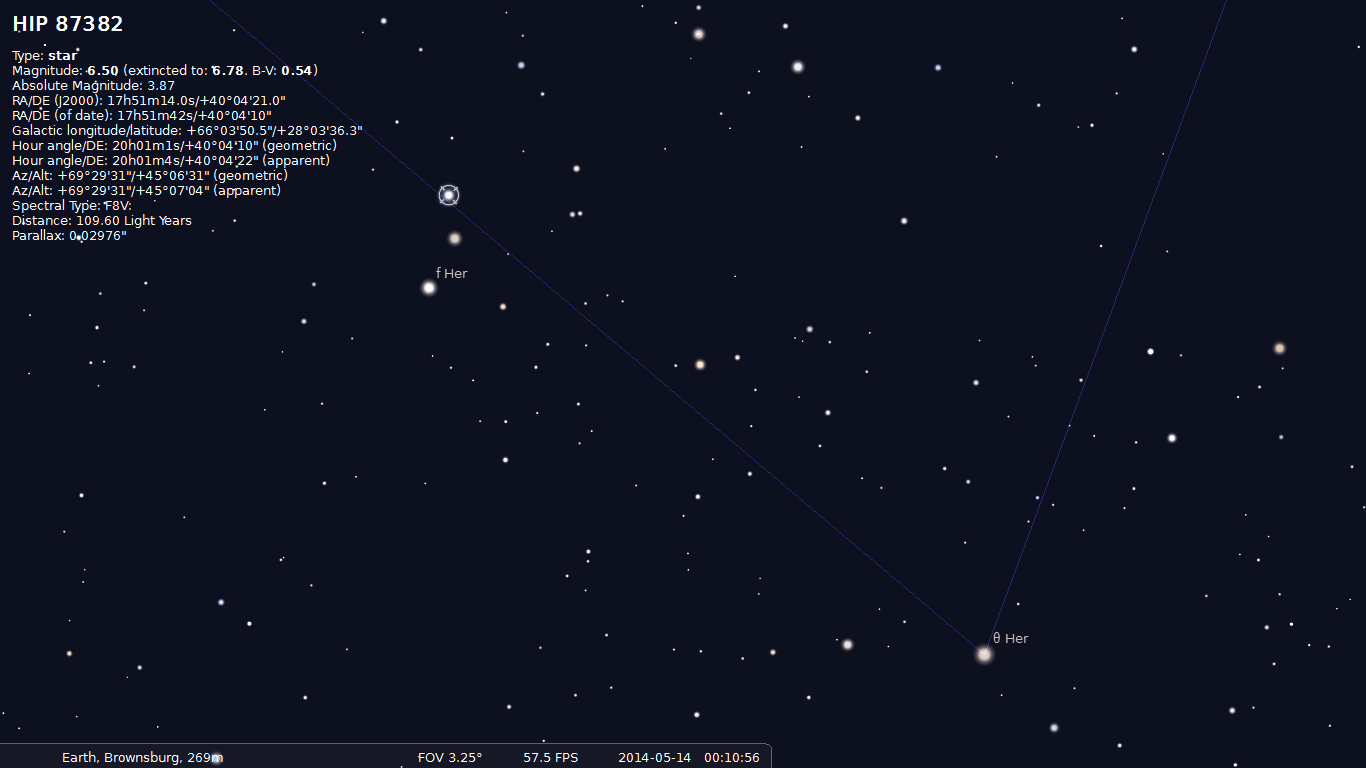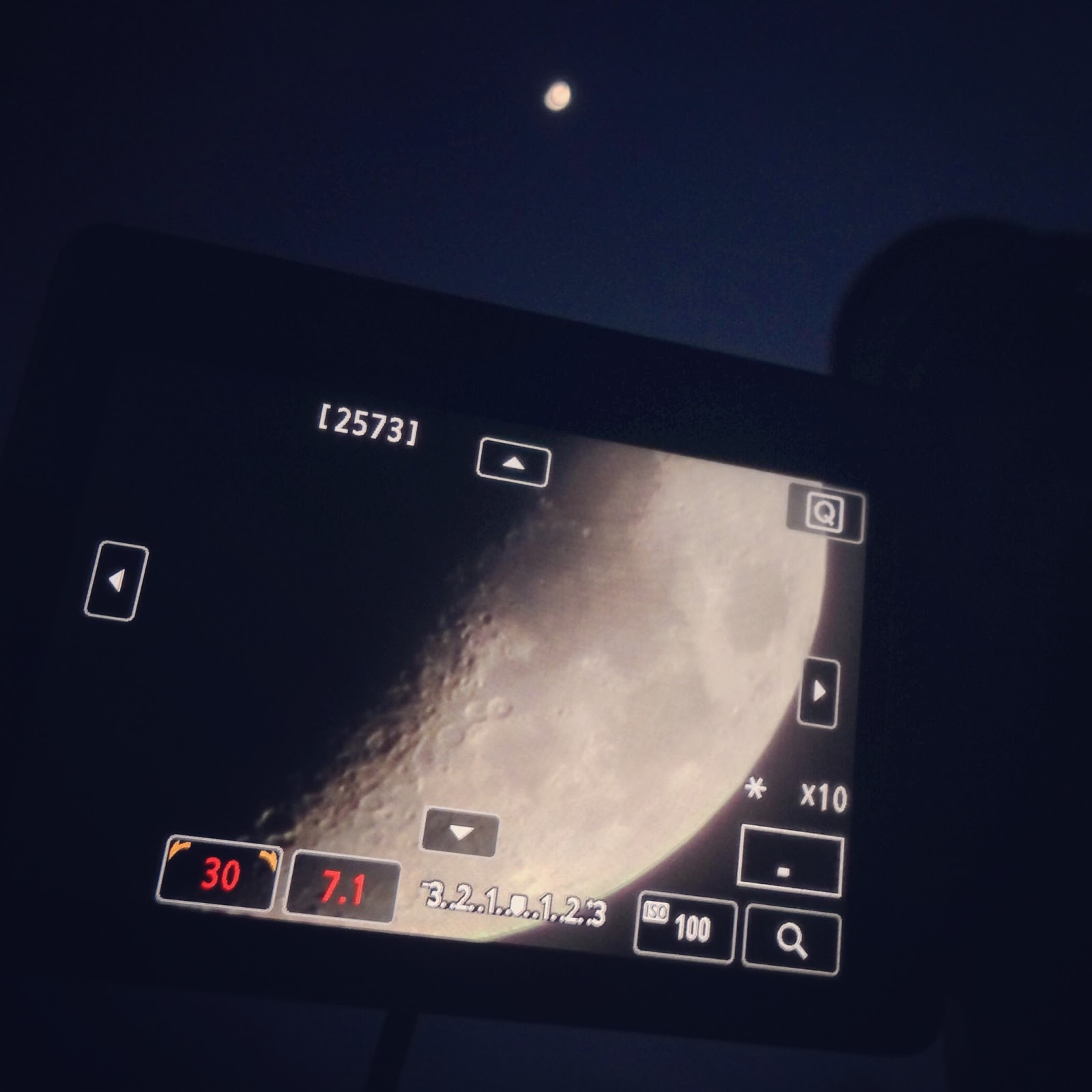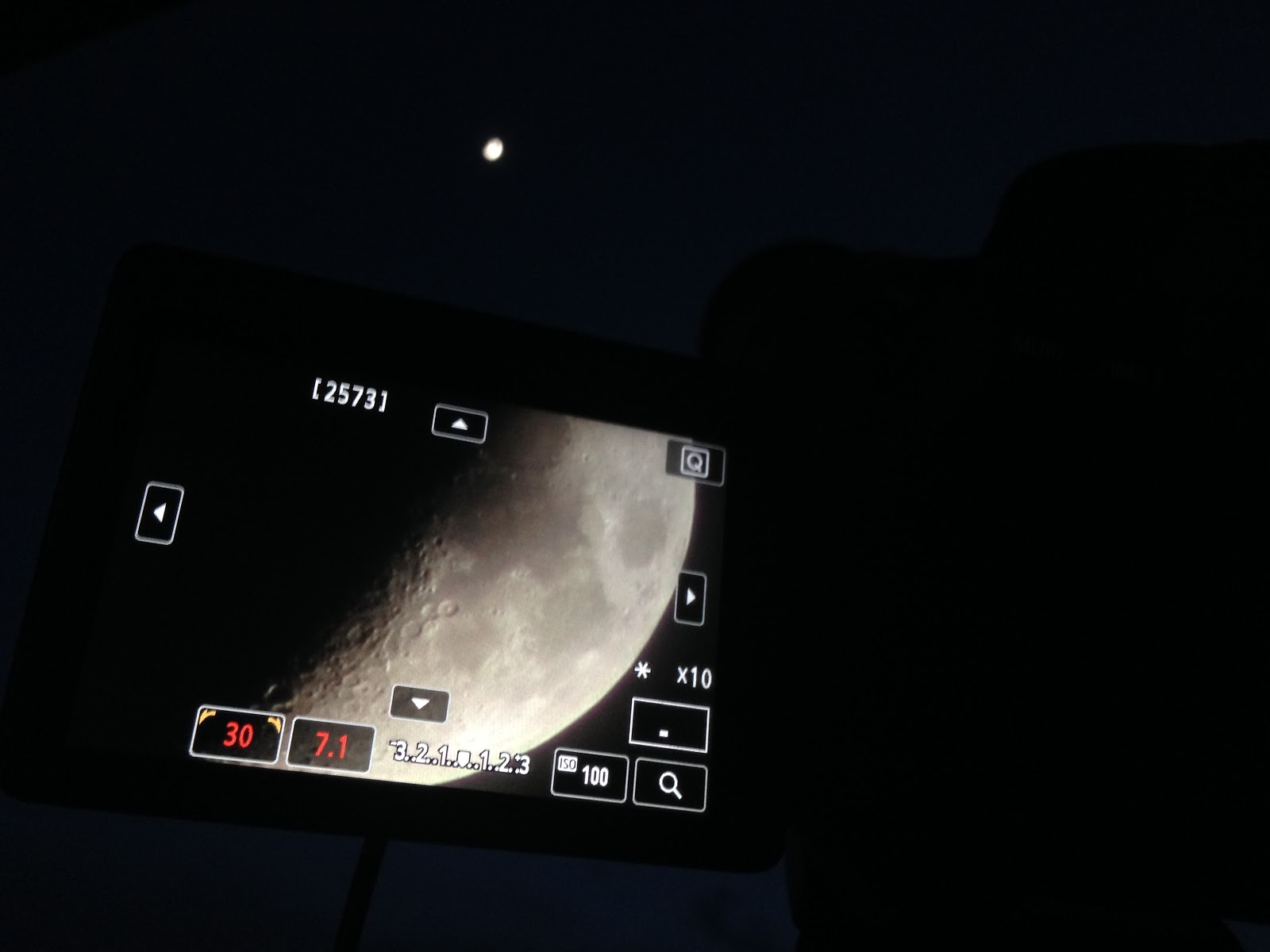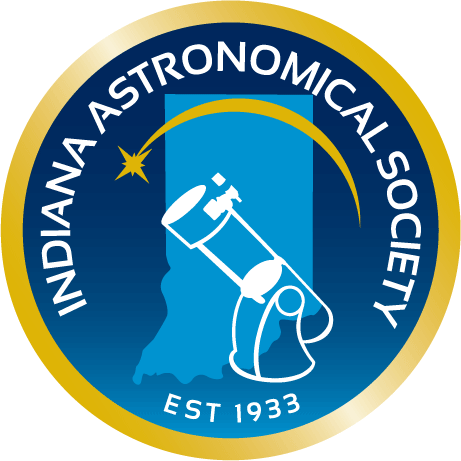Phil Dimpelfeld from the
Indiana Astronomical Society creates a Novice/Urban Observing List each month for newbies like myself with not-so-dark skies and not-so-powerful equipment. Phil recently announced the addition of a Level 1 list for true beginners to get familiar with important and recognizable objects. I'll continue pursuing the Level 2 list with slightly more challenging objects.
Last month I got 6 objects in one night thanks to their close proximity to each other in the constellation Leo.
This month, I'm looking forward to four Messier objects that are new to me, which will hopefully bring my Messier total up to 58. These objects include
my personal nemesis M64, the Black-Eye Galaxy that I maybe sorta saw in one wide field image, but
could never track down again.
Also this month, we might have a chance to see a
new meteor shower on the nights of May 23 and 24, with an unknown rate of meteors! Estimates for this new Camelopardalids meteor shower (as it's unofficially known) are between 100-1000 meteors per hour!
Camelopardalids
Camelopardalids
Camelopardalids
✔
Mel 111, the “Coma Star Cluster”, Open Cluster in Coma Berenices, 12h 25.0m, +26° 00', mag = 1.8, size = 275' (Use your binoculars for this one – it’s big!)
Mars, planet currently in Virgo, 12h 43m, -2° 58’, mag = -0.95, size = 14.5”
✔
M94, Spiral Galaxy in Canes Venatici, 12h 50.9m, +41° 07', mag = 8.1, size = 11' x 9.1'
Alpha Canum Venaticorum, “Cor Caroli”, Double Star in Canes Venatici, 12h 56.0m, +38° 19', mag = 2.9, 5.5, sep = 19.4"
✔
M64, the “Black-Eye Galaxy”, Spiral Galaxy in Coma Berenices, 12h 56.7m, +21° 41', mag = 8.5, size = 9.3' x 5.4'
✔
M53, globular cluster in Coma Berenices, 13h 12m, +18° 10′, mag = 8.3, size = 13’
Zeta and 80 Ursa Majoris, “Mizar” and “Alcor”, Double Stars in Ursa Major, 13h 23.9m, +54° 56', 2.3, 4.0, 4.0, sep = 14.4", 709". It is sometimes rumored that being able to split Mizar and Alcor naked eye is a test of your eyesight. But actually, it is really a test of how dark your sky is! At magnitude 4.0, Alcor is easily washed out by light pollution.
M51, the “Whirlpool Galaxy”, spiral galaxy in Canes Venatici, 13h 29m, +47° 11′, mag = 8.4, size = 11′ × 7’. The companion galaxy NGC 5195 can often be seen in close proximity to M51.
M3, Globular Cluster in Canes Venatici, 13h 42.2m, +28° 23', mag = 5.9, size = 16.0' (Located about a third of the way from Arcturus to Cor Caroli. It’s bright enough to be seen as a smudge in binoculars from suburban skies.)
✔
Theophilus, crater, first quarter Moon
Palus Epidemiarum, small mare, last quarter Moon
Challenge Object:
✔
M104, the “Sombrero Galaxy”, Spiral Galaxy in Virgo, 12h 40.0m, -11° 37', mag = 8.3, 8.9' x 4.1'



